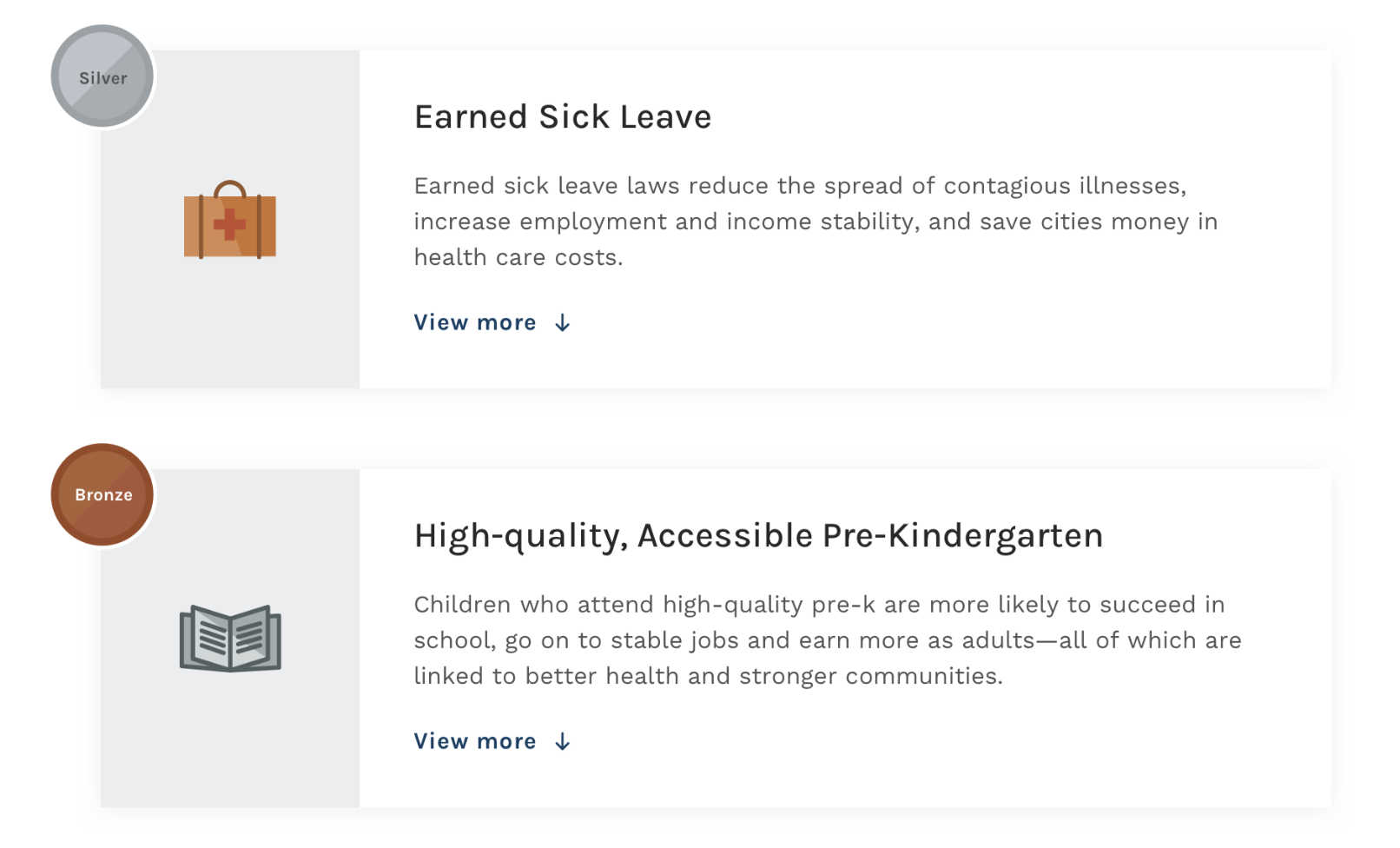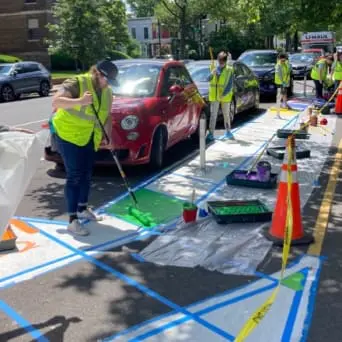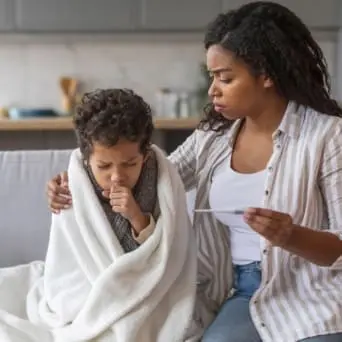City of Portland RFP00000729 Sustainable Procurement Excerpt
10/01/2017 – 06/01/2024
1. SUSTAINABILITY STANDARDS
1.1. Mandatory Environmental and Human Health Requirements
Products provided under this Contract and contained in the City Standard Furniture Catalog shall follow the Mandatory Environmental and Human Health requirements contained herein. Throughout this section, products that are required to meet the Mandatory Environmental and Human Health requirements will be referred to as “EHH-Applicable Furniture”.
• Public Furniture: All products
• Conference Furniture: All products except storage carts/dollies and power stations
• Support Furniture: All products
• Collaboration Furniture: All products
• Kit-of-Parts: All products except task lights, monitor arms, keyboard trays, CPU slings, power stations, and small accessories (e.g. paper trays, pencil holders).
In addition, the following Mandatory Environmental and Human Health requirements apply to the finished product as assembled, unless otherwise specified. For example, compliance with the VOC Emission requirements applies to the finished product as assembled and thus, the applicable thirdparty certification must be for the finished product as assembled, not the individual components.
The Contractor will be expected to limit product finishes and textiles offerings to those that maintain compliance with these Mandatory Environmental and Human Health requirements. For example, City end-users should not receive information on surface materials or textiles that would conflict with these requirements or otherwise void a VOC Emission certificate (i.e. some surface materials are not included in a product’s VOC certification).
1.1.1. Upon request, Contractor will be expected to provide applicable documentation confirming that products meet the City’s Sustainability Standards for furniture. As applicable to the individual criteria, documentation will be in the form of third-party certificates, product test results, applicable forms, a formal letter of assurance from the manufacturer stating the product meets individual sustainability criteria, and/or other documentation as needed to meet green building certification documentation requirements (such as for LEED, WELL, Living Building Challenge, etc.). These requests may occur during evaluation of new products to be added to the City Standard Furniture Catalog and/or as part of documentation requests required for LEED or WELL City projects.
1.1.2. All EHH-Applicable Furniture provided under this Contract shall meet the following environmental and human health requirements:
a. Flame Retardants
All EHH-Applicable Furniture shall be free of added flame retardant chemicals; this applies to both standard and optional furniture components. Exception:
• Electrical components may contain non-halogenated flame retardants.
b. VOC Emissions
All EHH-Applicable Furniture under this Contract shall be third-party certified as to meeting the California Department of Public Health (CDPH) Standard Method v1.2.2017 (or most current), for the testing and evaluation of VOC emissions from indoor sources using the office environment exposure scenario (Emission testing method California Specification 01350). Compliance with the CDPH standard shall be tested in accordance with ANSI/BIFMA Standard Method M7.1-2011. Product certification must be valid at the time a product is added to the City Standard Furniture Catalog and be kept valid as long as the product is provided through this Contract. Valid certification must meet the certification requirements below and demonstrate that the product has been tested within the past five years. The manufacturer shall have a policy and internal protocols in place for retesting products when major changes occur to the product (e.g. material changes, supplier changes).
VOC Certification and Documentation Requirements
Third-party certification must be performed by a certification organization that is ISO 17065:2012 compliant and the laboratory’s Quality Management System (QMS) and applicable test procedures are conducted in accordance with ISO/IEC 17025:2005. Documentation demonstrating compliance with this requirement shall be provided to the City upon request.
Third-party VOC certification documentation shall be provided to the City for all EHHApplicable Furniture. The third-party product certification documentation must specifically state:
• Product manufacturer name and address
• Brand name of certified product(s)
• Any exclusions to the certifications (e.g. specific product configurations/options that are not certified)
• Certified product conforms to the required specification
• The exposure scenario used to determine compliance
• Certification date (or start date and expiration date)
• Name of the certification organization
c. Formaldehyde
All EHH-Applicable Furniture containing composite wood materials (including hardwood plywood, hardwood plywood veneer core, hardwood plywood composite core, particleboard, or medium density fiberboard), whether raw or finished, shall comply with Phase 2 of California’s Code of Regulations, Title 17 §93120.2 – Airborne Toxic Control Measure to Reduce Formaldehyde Emission from Composite Wood Products. Compliance documentation for this requirement may be satisfied by demonstrating applicable components meet the requirement (as opposed to finished product as assembled).
d. Antimicrobials
All EHH-Applicable Furniture shall be free of intentionally added or built-in antimicrobial agents.
e. Perfluoroalkyl and Polyfluoroalkyl Substances (PFAS)
All EHH-Applicable Furniture components that constitute at least 5%, by weight, of the finished product must contain less than 100 parts per million (ppm) of Perfluoroalkyl and Polyfluoroalkyl Substances (PFAS), including perfluorooctanoic acid (PFOA).
f. PVC
No product containing PVC greater than 1% by weight shall be sold to the City under this Contract.
g. Fabrics/Textiles
All fabrics/textiles utilized on a finished product under this Contract must:
i. be cleanable without dry-cleaning chemicals;
ii. be free of added flame retardant chemicals;
iii. be free of intentionally added or built-in antimicrobial agents;
iv. contain less than 100 parts per million (ppm) of Perfluoroalkyl and Polyfluoroalkyl Substances (PFAS), including perfluorooctanoic acid (PFOA);
v. contain less than 100 parts per million (ppm) of hexavalent chromium and heavy metals, including mercury, cadmium, lead and antimony; and
vi. be third-party certified to at least one of the following standards:
• GOTS
• Oeko-Tex 100
• STeP
• Cradle to Cradle
• NSF/ANSI 336-2011
2. Reporting Requirements (See contract excerpt below)
3. Ongoing Compliance Reporting for Mandatory Environmental, Human Health, and Certification Requirements
Before fulfilling an order, Contractor shall ensure the products meet the City’s Sustainability Standards for furniture as defined in Attachment 3 Furniture Requirements. Upon request, the Contractor will be expected to provide applicable documentation confirming this. As applicable to the individual criteria, documentation will be in the form of third-party certificates, product test results, applicable forms, a formal letter of assurance from the manufacturer stating the product meets individual sustainability criteria, and/or other documentation as needed to meet green building certification documentation requirements (such as for LEED, WELL, Living Building Challenge, etc.). Since the majority of products will be through the City’s standard kitof-parts, this will only apply during the initial establishment of the kit, and for any subsequent exceptions. The Contractor will be expected to work closely with City project teams working on green building projects to provide the necessary furniture related documentation for the green building certification being pursued. New “EHH-Applicable Furniture” may not be added to the resulting Price Agreement without first demonstrating compliance with the mandatory Sustainability Standards.
RFP PHASE 1 EVALUATIVE CRITERIA (Sustainability Excerpts)
NOTE: Pass/Fail criteria included product compliance with mandatory sustainability specifications.
1. Describe your firm’s experience working with project teams in providing LEED-related product compliance documentation, both for MR(v4) and EQ credits.
2. Indicate which items in the Kit-of-Parts have the following product certifications or documentation available.
a. Living Product
b. Environmental Product Declarations (EPDs)
c. C2C Certification
d. Health Product Declaration (HPD)
e. Material Ingredient Disclosure (MID)
f. Declare Label
g. BIFMA level Scorecard
h. Green Circle Certification (Material Ingredient Reporting)
3. Indicate which items in the Kit-of-Parts are available with FSC certified wood components or finishes (as applicable). Indicated whether the FSC certified wood is standard or is available as an option. If optional, indicate typical percent price premium over the standard.
4. Describe how the system is designed for easy repair. Provide specific examples, including what can easily be replaced/repaired on-site.
5. Describe how the system is designed to minimize waste to landfills at the end of its useful life. Give a specific example of how the system can be easily recycled. If the manufacturer has a product-take-back program provide program details as to how it works, costs, logistics, etc.
6. Describe your approach to minimizing product packaging and shipping materials waste to landfill, such as using reusable shipping materials and/or recyclable packaging materials. Include details as to how your team will manage the product packaging/shipping materials during installation to ensure product packaging/shipping materials are not landfilled.
RFP PHASE 2 EVALUATIVE CRITERIA (Sustainability Excerpts)
1. In alignment with the City’s Green Building Policy, the Portland Building Reconstruction Project is pursuing LEED Gold certification, including the MR section from LEED BD+C v4. The project is also incorporating features from the WELL building certification standard. The successful proposer will be expected to be a partner in ensuring project furniture contributes to achieving applicable LEED MR v4 and EQ credit criteria, including the MR v4 Building Product Disclosure and Optimization credits. Who from your firm will be the point of contact for this portion of the scope of work and what is their experience in supporting LEED v4 compliance and documentation requests? Does either point of contact have experience supporting WELL Building projects?
2. As specified in Attachment 2 of the RFP, the City has specific Environmental and Human Health (EHH) requirements for furniture. Describe how you plan to ensure that products sold under the resulting price agreement will comply with these and other mandatory criteria contained in Attachment 2. As part of your answer, address how you will direct end-users to core material, textile, and surface options that comply with the EHH requirements.
3. Submit a five-page excerpt of a usage report from a current (non-City) client with all the data fields required per section 1.10.1 of the RFP. In addition to the Third-Party VOC Emissions product certification and Fabric/Textile Sustainability certification data fields, provide a list of other sustainability attribute/certification data fields that can be included in your usage reports for customers.
4. Describe your the furniture manufacturer’s capability to provide material ingredient disclosure documentation (MID or HPD) and Environmental Product Declarations (EPDs) for up to 5 highvolume furniture products for the Portland Building Reconstruction Project.
5. As available, for each of the following products provide: 1) a material ingredient disclosure (HPD or MID); 2) Environmental Product Declaration form (EPD); and 3) the BIFMA level Scorecard. a. (five specific products listed for the proposer to respond to)
6. Describe how the furniture manufacturer verifies products are free of added flame retardant chemicals (except electrical components). Include any references to internal or third-party testing, supplier disclosure protocols, etc.
7. What percentage of applicable products have as the default, wording on the flammability label that is compliant with Section 19094 of the California Business and Professions Code (i.e. applicable products sold outside of California)?
8. Does the furniture manufacturer have publicly declared carbon, water, and waste reduction goals and does the firm track and publicly report on meeting those goals? If so, describe the scope of these initiatives and provide a link to the publicly available reports.
9. Does the furniture manufacturer offer, or is planning to offer, carbon neutral products? If so, what is the scope and timeline for the offering and how is a carbon neutral product defined by Steelcase? (e.g. manufacturing only or manufacturing and supply-chain or other)
10. Does the furniture manufacturer offer, or is planning to offer, products certified as Living Products? If so, what is the scope and timeline for the offering?
11. Is your firm or the furniture manufacturer a signatory to the UN Global Compact?
12. Are any of the furniture manufacturer’s supply chain manufacturing factories/facilities SA8000certified? If yes, list the quantity and percent of certified facilities within their supply chain.
13. Highlight at least one way the furniture manufacturer is advancing the protection of human rights within their supply chain. (leadership going above and beyond regulatory requirements)
14. Provide information on any other sustainability innovations applicable to your proposal you think the City should know about.
EXECUTED CONTRACT REQUIREMENTS (sustainability related excerpts)
May 2018
1. City Standard Furniture Catalog
Contractor shall:
a. Develop and maintain a catalog containing all City Standard Furniture (“City Standard Furniture Catalog”), whereby authorized City employees can view City Standard Furniture and related compliant finishes and textiles. Development and maintenance of the City Standard Furniture Catalog will occur in collaboration with the City Project Manager, Contract Administrator, and related City staff.
b. Direct authorized City employees to the City Standard Furniture Catalog for furniture and finishes selection. Any requests to purchase furniture outside of the City Standard Furniture Catalog shall require approval through an established exception process, including review and authorization by City Sustainable Procurement Coordinator and management.
c. Collaborate with City Sustainable Procurement Coordinator on messaging to City endusers about the benefits of the sustainability features of the furniture.
2. Mandatory Sustainability Standards (same as RFP language)
3. Reporting Requirements
A. Semi-Annual Usage Report
Contractor shall submit semi-annual usage reports in a Microsoft Excel compatible format to City of Portland Procurement Services, or City’s Contract Administrator.
The usage report shall be submitted by August 15th for items invoiced from January 1 to June 30 of that year and on February 15th for items invoiced from July 1 to December 31 of that year. It shall contain the following information as separate columns:
• Order number or invoice number (unique identifier)
• City Purchase Order Number
• Order date or invoice date
• Customer number
• City Contact Name (order contact name)
• Contact Bureau Name
• Ship To Address
• Product Category (systems furniture, conference, seating, lounge)
• Manufacturer Name
• Manufacturer Product Number*
• Item Model Name*
• Item Description
• Quantity*
• Unit Price**
• Extended Price (quantity x unit price)
• Total Weight (lbs)
• Pre-Consumer Recycled Content per unit (%)
• Post-Consumer Recycled Content per unit (%)
• Hard Surface Material (e.g. laminate, veneer, etc.)
• Third Party-Certified to be Compliant with Current CDPH (CA 01350) Emissions Standard (Y/N)
• IAQ Certification Name and Certification Level (e.g. SCS Indoor Advantage Gold)
• Cradle to Cradle Certified and Overall Certification Level (e.g. Bronze, Silver, Gold)
• ANSI/BIFMA level Certification and Certification Level (e.g. one, two, three)
• Meets Healthier Hospitals Safer Chemicals Challenge (Y/N)
• Textile Brand/Manufacturer Name
• Textile Name
• Textile Certification Name and Achievement Level
* These fields should reflect functional units. For example, the line item would show the model name, quantity and price for an entire desk or chair as opposed to seeing separate line items per component (leg, surface, castor, seat pan, etc.). In other words, however that item is considered a “unit” for the purposes of IAQ certification, Cradle to Cradle certification, recycled content reporting, etc.
**installation and delivery charges should not be included in the furniture unit price.
4. Furniture End-of-Life Services
1. The service called “Phase 2” may be used to dispose of furniture. Minimum items to be included in the Phase 2 Program: Office Furniture, including, but not limited to: task chairs, systems furniture, moveable partitions, stand-alone desks, file cabinets, lobby furniture, classroom/conference furniture, and lab furniture.
2. The Contractor’s Phase 2 team shall make all efforts to perform services such that furniture reuse and recycling are maximized and waste-to-landfill is minimized, in line with the City’s 90% (by weight) landfill waste diversion goal. To the extent possible, any reuse shall occur locally (within 50 miles of project site). The Contractor shall limit donation eligibility to publicly-funded K-12 schools and 501(c)(3) charitable organizations. The Contractor will be expected to actively outreach to and engage a variety of local publicly-funded K-12 schools and 501(c)(3) charitable organizations such that multiple organizations actively receive donations. The Contractor should not repeatedly donate to the same organizations by default.
3. Specifics about the project location and types and volumes of surplus items will be outlined in individual project requests. However, for each project, Contractor’s Phase 2 team must provide the following services:
i. Initial Consultation. Within seven (7) business days of receiving a Phase 2 request from a City Bureau, the Phase 2 team shall meet with the requesting Bureau contacts to acquire project information and schedule a walkthrough. The initial consultation shall also address any need for after-hours or weekend scheduling and security clearance requirements
. ii. Walkthrough and Disposition Plan. Conduct a site walkthrough to assess inventory and building restrictions. Within seven (7) business days of walkthrough, Phase 2 team to provide a disposition plan and project quote. The plan shall include an assessment of item fate (sale, donation, other reuse, recycling, landfill), project timeline, primary contact names and numbers, and an estimated percent waste recovery rate.
iii. Finalize Phase 2 Plan and Quote. Confirm a final disposition plan with the City project manager and schedule work.
iv. Local Subcontractor/Team Management and Coordination. Find, onboard and select subcontractors and related vendors (e.g. movers, resellers) that contribute to meeting the following requirements:
• Confirm and provide documentation demonstrating that any on-site personnel performing the services meet security clearance requirements stipulated in the individual project request.
v. Preparation of Items for Repurposing or Recycling
• Disassemble as needed to safely move items or otherwise facilitate repurposing and recycling
• Conduct final inventory
• Coordinate tag/code items and stage/support load-out for repurposing as directed by the Contractor
vi. Furniture Removal, Loading and Delivery.
• Coordinating any buyer/donation recipient viewing and subsequent removal of specified inventory.
• Provide all necessary labor and moving equipment, tools, and vehicles need to safely move items to their final destination without compromising the value of the items.
• Provide all necessary materials to protect City property during the removal of the items from the site (e.g. corner guards, floor mats, etc.)
• Clearing out specified inventory of office furniture and other project inventory.
vii. Close-Out & Walkthrough
• Basic debris related to project work is removed and disposed responsibly by the Contractor not using the building or tenant bins unless otherwise approved by the City project manager. Space is left in broom-sweep condition. (Tenant debris may be disposed of/recycled using tenant bins).
• Collect all weigh tickets, receipts, etc. for Contractor documentation and project close-out reporting.
• Performing a final close-out walkthrough with the City representative upon completion of inventory removal. Obtain project sign off from the City project manager or designee.
viii. Project Reporting. Upon Completion of the Project:
• Phase 2 team to collect, analyze and report on key financial, social and environmental metrics and provide a tailored metrics report. At a minimum, the report shall provide percentages of donated, internal reuse, resold, recycled, and landfilled items. Donation documentation (recipient information, approximate dollar value) shall also be included in the report.
i. Liability Protection. Contractor is responsible for inspection of each item and determination of fitness for use. Contractor accepts liability for doing so.
ii. Transfer of Ownership. Once the Bureau Project Manager approves the final disposition plan and the Contractor is authorized to proceed with the Plan, Contractor assumes ownership of any items removed from City property until such items are safely transferred to the designated end-recipient or, if desired by the Bureau Project Manager, otherwise returned to the City.
5. PORTLAND BUILDING LEED AND WELL CERTIFICATION DOCUMENTATION REQUIREMENTS
The Portland Building is pursuing LEEDv3 building certification. During the planning for the project, the team elected to do a LEEDv4 Materials Swap. The swap replaces the LEEDv3 MR (Materials & Resources) credits with the LEEDv4 MR credits.
While the LEEDv4 Low-emitting materials (LEM) credit is not being pursued (rather, LEEDv3), furniture must meet the VOC Emissions requirements stated in the City’s Furniture Requirements (Attachment 3). LEM related documentation will be in alignment with the City’s Furniture Requirements.
The project is also pursuing WELL certification and will require specific documentation to satisfy that submittal package as well. The documentation requirements below list takes into account all three of these program efforts.
A. LEEDv4 MR Credit Documentation Requirements
• Cost information for each product
• Quantity of each product
• Environmental Product Declarations (EPD’s) or Life-cycle assessments (LCA’s).
o The City prefers Product Specific EPD’s and will evaluate other options if proposed.
o A Product Specific LCA/EPD shall be produced and provided for the primary workstation system (panels and free-standing tables) selected for the building.
o The project team will work with the Contractor on opportunities for additional Product Specific LCA/EPDs from the remainder of the furniture scope, targeting high volume/high total spend items. The City’s goal for this project is to have at least 5 Product Specific EPDs from the furniture scope.
• Building product disclosures
o Documentation that complies with the requirements below shall be provided for at least 5 products (high volume/high total spend) from the furniture scope to satisfy LEED MR credit requirements.
o The City will accept any of the following options.
▪ Manufacturer Self-disclosures OR Health Product Declarations (HPD’s). (Compliant with LEEDv4)
• Publicly available inventory of all ingredients by name and CASRN and/or EC Number. Inventoried to 1000 or 100 ppm.
• Any materials defined as trade secret or intellectual property may withhold the name and/or CASRN/EC Number but must disclose role, amount and hazard screening using either:
o Greenscreen benchmark, as per GreenScreen v1.2
o The Globally Harmonized System (GHS) of Classification of Labeling of Chemicals rev. 6 (2015).
▪ Material Health Certifications or Labels
• Cradle to Cradle Certificates (Bronze, Silver, Gold or Platinum)
• Cradle to Cradle Materials Health Certificates (Bronze, Silver, Gold or Platinum)
• Declare Labels
• ANSI/BIFMA Scorecard with 7.5.1.3 (3 points achieved) ver. e32014.
• ANSI BIFMA Scorecard with 7.4.1.3 (3 points achieved) ver. e32012.
• UL Product Lens Certificates
• Recycled Content information (%) (when applicable)
o Pre-consumer recycled content (%)
o Post-consumer recycled content (%)
• FSC documentations (when applicable)
o % of product by weight that is FSC certified new wood.
o FSC Chain of Custody certificate
B. LEED IEQ/LEM & WELL Feature 4 VOC Reduction Documentation Requirements
• Documentation shall be provided for 95% (by cost) of purchased furniture.
• Cost information for each product
• Quantity of each product
• Refer to Attachment 3, City Furniture Requirements, VOC Emissions Requirements
City of Portland ADM-1.09, Sustainable Procurement Policy
07/20/2022 – 06/01/2024
1. Purpose
In accordance with the City of Portland Sustainable City Principles [1994, 2015] the City of Portland [the City] recognizes that:
1. the products and services the City purchases have inherent social, human health, environmental, and economic impacts;
2. the human health, environmental, social, and economic impacts of products and services occur throughout their life cycle and throughout the associated supply chains;
3. the City can leverage its purchasing to reduce adverse impacts throughout product or service life cycles and influence positive change within spanets and communities; and
4. by understanding and taking responsibility for the full, life cycle impacts and costs of goods and services associated with City purchases, the City reduces risk, practices fiscal responsibility, reduces adverse social and environmental impacts, and contributes to sustainable development in general.
As such, the City is committed to understanding and taking appropriate responsibility for the impacts of its purchasing by:
1. establishing this Sustainable Procurement Policy to guide purchasing decisions at the City;
2. integrating sustainable procurement best practices established by this Sustainable Procurement Policy and subsequent sustainable procurement resources into the City’s procurement processes and decision making; and
3. maintaining a Sustainable Procurement Program adequate to support City purchasing decisions and to facilitate stakeholder collaboration, compliance, and continuous improvement.
2. Applicability
This policy applies to all types of City-funded procurements and to all City divisions and employees. Specific employee roles, responsibilities, and expectations are further described within this policy.
3. Policy Statement
All City employees shall utilize the City’s sustainable procurement guiding principles and follow sustainable procurement best practices when planning and designing projects, developing project and operations budgets, developing asset management plans, writing product and service specifications or standards, selecting materials, making purchasing or supplier decisions, and developing and managing City contracts and price agreements as applicable to their roles and responsibilities and/or to a specific project. In doing so, City employees shall strive to be leaders in sustainable procurement and reduce adverse social, human health, and environmental impacts associated with City purchases while maintaining fiscal health, both in the short and long-term.
4. Sustainable Procurement Guiding Principles
1. Everything is Connected. All life depends on healthy natural systems. Humanity depends on vibrant and fair social systems. Our purchasing decisions impact these systems on all levels.
2. Conserve. Reuse first. Buy only what we need second. Acknowledge real limits of natural resources.
3. Think in 3D. Consider all 3 dimensions—environmental, social, economic—when evaluating options. Look for hidden costs to people and planet not included in price.
4. Take a Life Cycle Perspective. All purchases have impacts over the life of the product or service. Think about long-term costs to people, planet, and the City.
5. Provide Fair Opportunities. Ensure suppliers have a full and fair chance to compete. Promote transparency in decision making and actively mitigate bias.
6. Ensure Health and Safety. Take precautions. Avoid toxins that recirculate in air, water, soils and materials to harm people and animals.
7. Uphold Accountability. Reinforce responsibility and ethical behavior throughout our supply chain, upstream and downstream.
8. Support Innovation. Increase demand and build spanet capacity for sustainable solutions. Change the status quo for the better.
9. Full Integration. Utilize 3D thinking in all planning, purchasing, and contract management practices. Respect interests of all stakeholders.
10. Lead the Way. Seek continuous improvement and collaborate with other agencies to make a positive difference. Together, many small actions add up to big change.
5. Sustainable Procurement Prioritization
Based on sustainability-related spend analyses and City sustainability policy synergies, the City shall target sustainable procurement practices that:
1. Reduce greenhouse gases (GHGs);
2. Prevent or otherwise reduce exposures to Substances of (Very) High Concern (SVHCs, SHCs);
3. Foster and integrate supplier diversity; and/or
4. Support safe and fair labor practices and ethical behavior throughout the supply chain.
The Sustainable Procurement Program shall develop guidance for City employees to help maximize fiscally responsible “high value, high impact” actions based on the above targeted impact areas and operational contexts.
This section may be updated in between policy revisions per the continuous maintenance process.
6. Sustainable Procurement Best Practices
The following sustainable procurement baseline and emerging best practices are procurement practices derived from historical City sustainability policies and/or reputable sustainable procurement research and guidance. These best practices may be updated in between policy revisions per the continuous maintenance process. Implementation tools and specific guidance for these best practices shall be provided through the Sustainable Procurement Program.
Baseline Best Practices
Baseline best practices represent sustainable procurement processes, decisions, methodologies, or actions that should be incorporated into City purchasing activities by default (“how we do business”).
Greenhouse Gases (GHG) Emissions Reduction
1. Invest in energy efficient products, services and technologies that result in simple paybacks of ten years or less.
2. Specify and buy recycled content products with as high post-consumer waste content as possible while meeting responsible performance specifications; including packaging and shipping materials. Key materials to target for recycled content include paper, plastics, metals, asphalt, and concrete.
3. Specify and buy paper products that meet the City’s Environmentally Responsible Paper Standard.
4. Invest in highly fuel-efficient and low carbon fueled fleet vehicles and equipment, following an “electric first” strategy. Include installation of electric charging stations where appropriate. Bureaus are responsible for metering electricity fuel use for tracking purposes.
5. Specify and buy reusable, refillable, and readily recyclable products, including packaging and shipping materials. Invest in processes, technologies, products, or services that reduce waste.
6. Invest in on-site renewable energy technologies at applicable City-owned facilities as defined by the City’s Green Building Policy.
7. Purchase renewable energy for City electricity use.
8. Ensure architectural, engineering, and related design services deliverables incorporate City green building and green infrastructure policies and practices.
9. Invest in processes, technologies, products, or services that reduce consumption of natural resources or chemicals.
10. Avoid the use of aerosol cleaning products and canned air products.
11. Avoid the use of bottled water; support access to bottle-fill tap water stations.
Harmful Chemicals Reduction
1. Seek out and utilize processes, technologies, services and products that reduce exposure of Substances of (Very) High Concern (SVHCs/SHCs) to people and the environment. Follow the Precautionary Principle when evaluating the comparative toxicity of processes, products, or services.
2. Specify and utilize interior finishes (paints, flooring, furniture, etc.) that meet third-party leadership standards for less-toxic and low-emitting products.
3. Specify and utilize interior cleaning and maintenance products that meet third-party leadership standards for less-toxic and low-emitting products, including products used by contractors who clean and maintain City facilities. Specify and utilize least-toxic disinfectants and use disinfectants judiciously.
4. Specify and utilize electronics products that meet third-party leadership standards that include mandates for reducing/eliminating SVHCs/SHCs. Specify and utilize electronic recyclers that meet third-party leadership standards for responsible electronics recycling.
5. Use effective and progressive integrated pest management strategies to minimize reliance on pesticides of concern and to ensure careful screening of products, their use, and potential impacts.
6. Do not use exterior materials containing zinc, copper, arsenic, or other materials that can contaminate stormwater and are toxic to aquatic life.
7. Utilize vegetable-based oil, food-grade oil or other environmentally comparable vehicle/equipment oil products, where available, and biodegradable hydraulic fluids.
Supplier Diversity and Fair and Safe Supply Chains
1. Seek out and utilize State certified DMWESB and SDVB contractors.
2. Purchase apparel products from manufacturers that comply with the City’s Code of Conduct for Apparel Manufacturers and disclose the apparel product’s point-of-assembly factory locations.
3. When acting in the City’s proprietary interests, expedite labor procurement standards in highrisk industries (such as janitorial, security, and industrial laundry services) to avoid labor disputes and resulting disruption to services provided by Portland-area workers. Require labor peace agreements for all contracts (as defined in Attachment 4) in these industries, upon adoption of this policy
Sustainable Procurement Tools/Multi-Purpose
1. Specify and select products and services independently certified to reputable third-party environmental and/or social product and/or service leadership standards, preferably multiattribute standards that evaluate products or services along their entire life cycle.
2. Whenever possible, utilize life cycle costing methods to determine the full cost of a product, service or design.
3. Utilize strategic procurement methodologies to obtain the best value while advancing sustainable procurement. Applicable strategic procurement methodologies include, but are not limited to: spend consolidation (focusing solicitations only on sustainable procurement products/services); aggregation (leveraging collective purchasing power); standardization (reducing product variety); servicizing; or negotiating for innovation (supplier engagement).
[. . .]
9. Policy Compliance
City employees are responsible for complying with this policy, utilizing applicable Sustainable Procurement Program tools and resources, and providing targeted sustainable procurement data as requested.
As outlined in the Sustainable Procurement Metrics and Reporting section, the Sustainable Procurement Program shall track Key Performance Indicator (KPI) data at the bureau level to the extent possible to facilitate feedback to bureaus on sustainable procurement performance. The Sustainable Procurement Program shall also develop other feedback loops for bureaus to convey effectiveness of sustainable procurement specifications, processes, and program resources.
The Sustainable Procurement Program shall seek opportunities to incentivize compliance with this policy through recognition, process improvements, or other strategic methods.
10. Sustainable Procurement Metrics and Reporting
The following metrics and reporting requirements shall encourage continuous improvement and may be updated in between policy revisions per the continuous maintenance process. For each of the targeted impact areas, the Sustainable Procurement Program shall develop at least one Key Performance Indicator (KPI). As sustainable procurement data capabilities and sustainable procurement resources advance, the Sustainable Procurement Program shall develop additional KPIs. To the extent possible, the Sustainable Procurement Program shall develop and track KPI data at the bureau level to facilitate feedback to bureaus on sustainable procurement performance. To facilitate continuous improvement and process efficiencies, the City shall invest in sustainable procurement spend and impact data, life cycle costing, cost-benefit, and/or supplier evaluation tracking and reporting tools as best practices in sustainable procurement metrics and data capabilities develop. The Sustainable Procurement Program shall report annually on the prioritized impact area KPIs and seek to increase reporting frequency and data access as applicable tools become available. Annual reports/KPI data shall be posted on the Sustainable Procurement Program website.
11. Policy Update and Continuous Maintenance Process
Policy Update Process
The Chief Procurement Officer and Sustainable Procurement Program staff shall periodically bring together stakeholders to review and update this policy.
Continuous Maintenance Process
Sections of this policy subject to continuous maintenance may be revised in between policy update cycles in order to incorporate new applicable initiatives, best practices, tools, capabilities and processes, and remove outdated references. Updates made to this policy through continuous maintenance will be posted on the Sustainable Procurement Program website and reference the month and year the update was made. The continuous maintenance process shall be initiated by the Sustainable Procurement Program Manager. Proposed updates shall be reviewed by applicable stakeholders for input and refinement. Proposed updates shall be approved by an internal multi-bureau stakeholder group, such as the Procurement Services Bureau Liaison Group or equivalent. Continuous maintenance updates shall occur no more frequently than once a year.
[. . .]
Portland City Code § 5.33.080 Sustainable Procurement
03/04/2020 – 06/01/2024
A. Sustainable Procurement Policy. Under the direction of the Chief Procurement Officer, Procurement Services shall develop and maintain a Sustainable Procurement Policy that directs action to understand and take responsibility for the environmental, social, and economic impacts of City Procurement decisions using a Life Cycle perspective. All City bureaus and offices shall comply with the Sustainable Procurement Policy and include the Sustainable Procurement Policy directives and best practices in their Procurement planning and decisions.
B. Consumption Reduction. As part of the City’s Sustainable Procurement commitment, City bureaus and offices shall strive to reduce consumption by using strategies such as, but not limited to, the following:
1. Fully assessing the need;
2. Reusing, repairing, and repurposing goods and materials on hand;
3. Purchasing durable goods and materials;
4. Purchasing goods with minimal packaging;
5. Utilizing manufacturer leasing and take-back programs;
6. Purchasing reusable, repairable, and recyclable goods and materials;
7. Investing in technologies and processes that facilitate reuse, consumption reduction, or lean inventories.
C. Life Cycle Costing. As part of the City’s commitment to understanding and taking responsibility for the environmental, social, and economic impacts of City Procurement decisions, whenever feasible City bureaus and offices shall utilize Life Cycle costing methods to determine the full cost of a product, service, or design, and factor these costs into Procurement decisions and Contract award criteria. This includes factoring in the social cost of carbon and similar methodologies that monetize the human health, social, and environmental impacts of the City’s Procurement decisions.
D. Use of Product or Service Sustainability Standards or Labels.1. City bureaus and offices shall utilize, as applicable, reputable third-party environmental and/or social product and/or service standards (“sustainability standards”) when specifying or procuring Goods or Services. Reputable sustainability standards are those that:
a. Have been developed by a third-party through a public, transparent, and broad stakeholder process;
b. The standard criteria are relevant and represent leadership in the applicable issue areas for the covered Goods or Services; preferably addressing multiple environmental or social impacts throughout the product or service Life Cycle.
2. City bureaus and offices shall utilize, as applicable, reputable third-party environmental and/or social product and/or service labels (“sustainability labels”) when specifying or procuring Goods or Services. Reputable sustainability labels are those:
a. That represent product or service compliance to a reputable, third-party sustainability standard;
b. Where product or service compliance to the standard is verified by an impartial third-party;
c. Where the label is awarded by an impartial third-party;
That satisfy the standards for sustainability certification and label programs developed by the International Organization for Standardization or other recognized standards-setting or accreditation organizations.












































































































































































